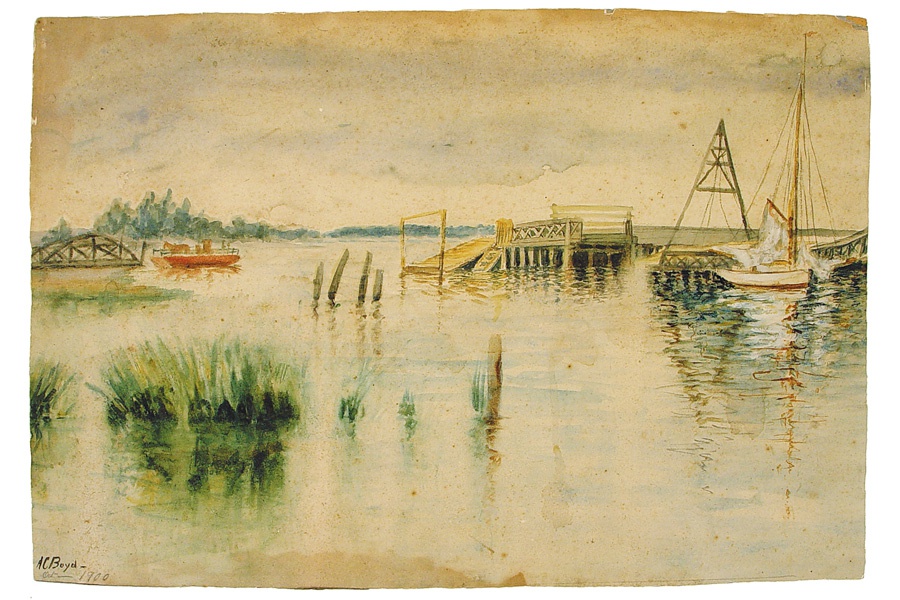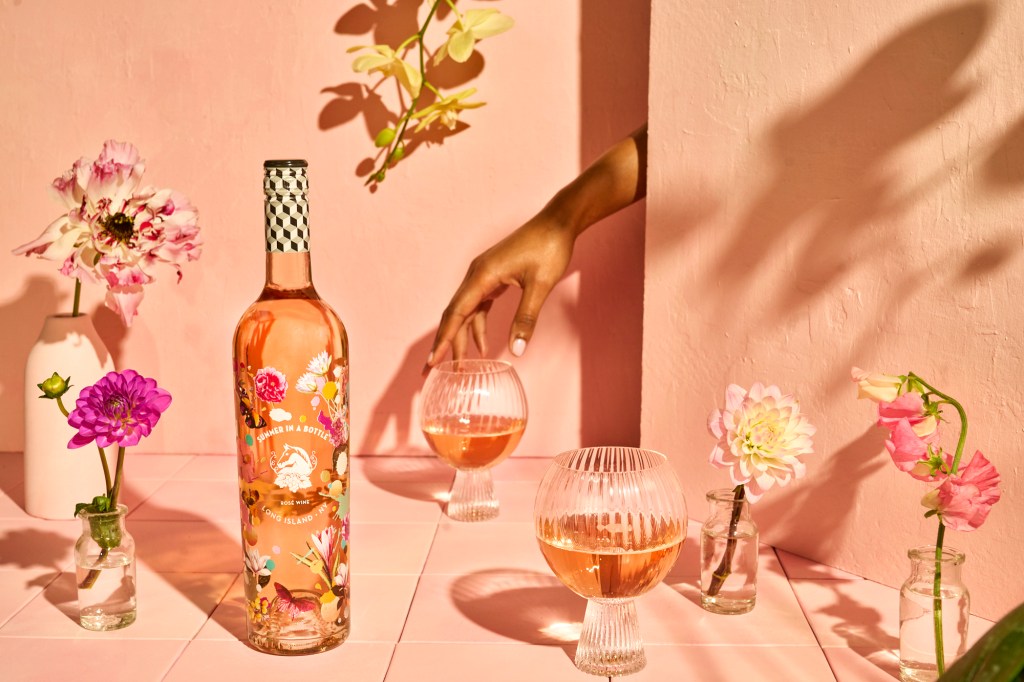Painter Annie Cooper Boyd’s Rich Legacy Lives On in Sag Harbor

How serendipitous that Annie Cooper Boyd (1864–1941), whose charming, restored brown shingled cottage at 174 Main Street, which dates to 1795 and houses The Sag Harbor Historical Society, is being given a major exhibit at what was once the family home. The opening took place over the July 12 weekend, accidentally coinciding with a New York Times piece “Crunching Literary Numbers” by Marc Egnal. The article suggested that, based on new word-frequency tabulating technology, the role of creative women in the late 19th century in America “inverts” conventional wisdom about domesticity and professionalism. Annie, a talented and determined woman, would likely not have been surprised.

A prolific and pleasing artist whose drawings and paintings can be used to date local history, especially the Sag Harbor waterfront, Annie Burnham Cooper, or “ABC,” as she often signed her work, reconfiguring ABC into “ACB” when she married John Boyd in 1895, seems to have deepened her commitment to art and a career in art with the passing years. When she was 22, she took painting lessons from Virginia and Henrietta Granbery on East 47th Street, later inviting them out to stay with her over the summer. She also studied at William Merritt Chase’s en plein air Shinnecock Hills Summer School of Art in Southampton. Many of her acrylics and watercolors reflect the reigning influence there of European impressionism.

While not evidencing the advocacy of later-day 20th century feminism, Annie certainly subscribed to much of its sensibility, as when she writes fervently in her diary in 1889 that she “hates dependence [underlining hers] and shall be glad when women shall be as free and independent as men.” Her passion was particularly centered in art. “My mother always had a paint brush in her hand,” said her daughter Nancy Boyd Wiley (d. 1998), a love that obviously extended to interiors as well as plein air. As visitors to SHHS can see, Annie painted occasionally on walls and doors, including the Beebe Windmill, and, upstairs in a bedroom, a mass of dogwood flowers. She felt strongly about making a living from her work, referring to transactions as a “business” and keeping accounts. A beloved child, the youngest of 11 children, she was, admittedly, “spoiled” by her father, who kept her well supplied with paint and materials.

“Everyone wants to know what’s inside the little dark house,” says Jean Held, who is a member of the board of SHHS and the head of its Exhibit Committee. She helped curate the exhibit, along with Molly Adams, a naturalist and educator at the South Fork History Museum, whom Held met on a bird walk Adams was leading at the Morton Wildlife Preserve. There was something about her, Held recalls. Molly was young, had a sketchbook and seemed a bit like Annie, who called herself “a child of nature.” A bond was formed, and Adams was invited to be the curator, bringing a “fresh eye to the paintings and drawings,” says Held. She did research with SHHS board member Barbara Schwartz and received lively input from SHHS co-president and resident wit Jack Youngs, whose family roots in Sag Harbor spur his enthusiasm to show and tell all manner of Sag Harbor history.

SHHS has approximately 500 Annie Cooper Boyds, large and small (an unfinished piece of the South Ferry is a gem), some framed and some with new mats in old frames. The downstairs rooms contain the major part of the exhibit and here and there display Annie’s work next to paintings by other artists.

This informal comparison arrangement points up ACB’s freer style, higher horizon lines and more subdued palette, not to mention the distinctive multiple views she did from her bedroom window and on short trips she took by boat, perhaps taking her paint box aboard, and on horseback. She especially loved the beach. Two pictures of the “Amagansett Dunes,” one early, one late, particularly engage, as they suggest a shift in style over the years toward a fuller palette, distinct over-painting, textured brush stokes and flecks of color—grasses and nautical details—that suggest movement. Many of the earlier works, more subdued and sepia-toned, seem composed more for accuracy than for conveying an impressionist scene, and seem to rely on line over color for composition. She was certainly what could be called an evolving artist.

It’s significant that Annie named her cottage “Anchor to Windward.” The phrase is used by experienced sailors who know, and know how, to secure safe mooring. The cottage eventually became her year-round home and studio. She was, it’s been said, a woman ahead of her time—not just as an artist but as a tireless promoter of her beloved Sag Harbor. The exhibit is open Sat. & Sun, 1–4pm. Or by appointment. Admission is free but donations are always welcome. SHHS is at 174 Main Street, set back from the road. You can almost miss it. But don’t.

Exhibit at Sag Harbor Historical Society through the summer at 174 Main Street, Sag Harbor.
631-725-5092, sagharborhistoricalsociety.org



